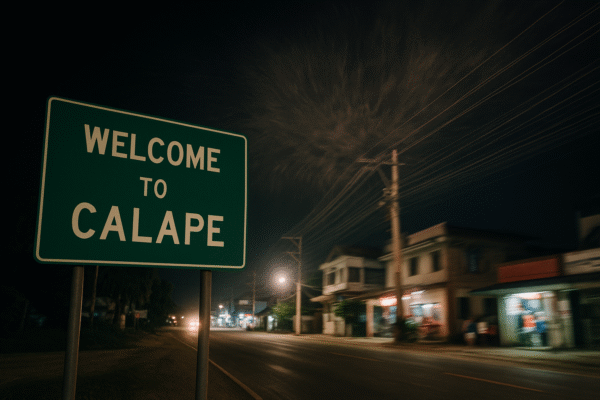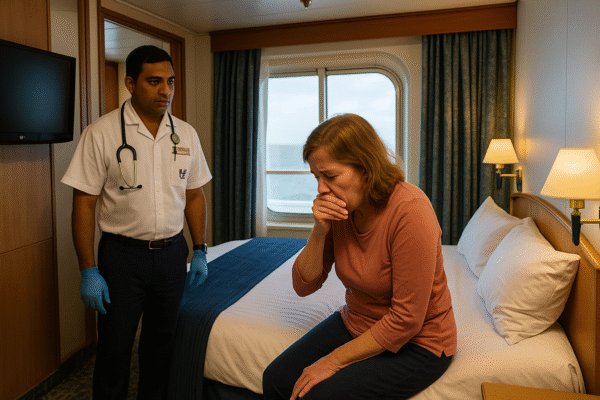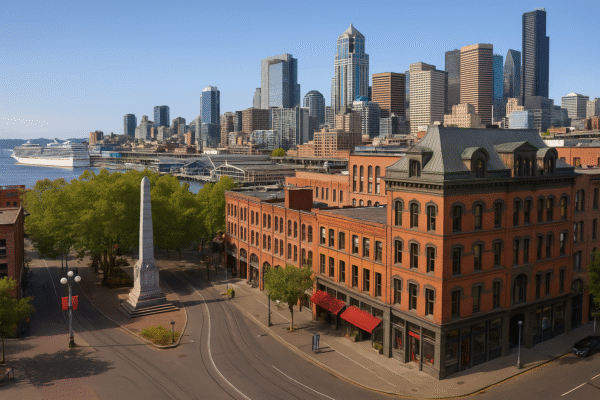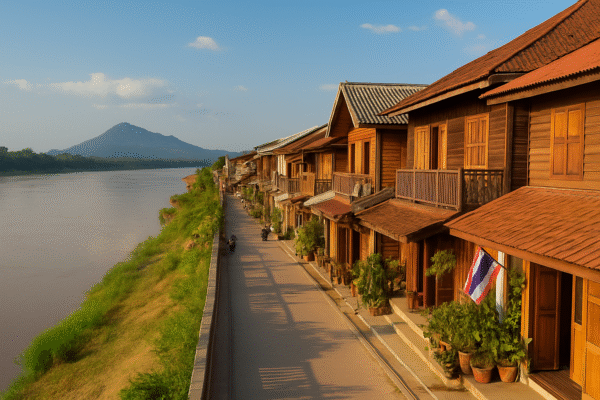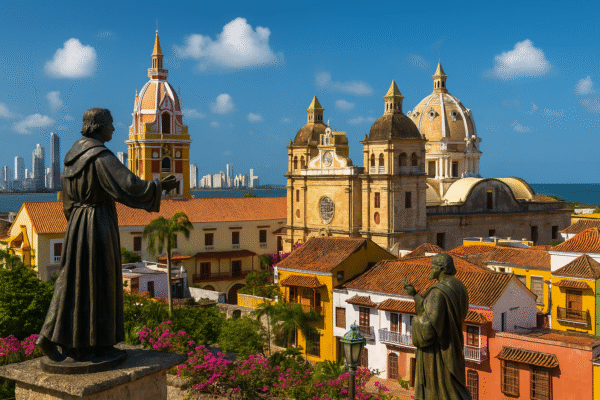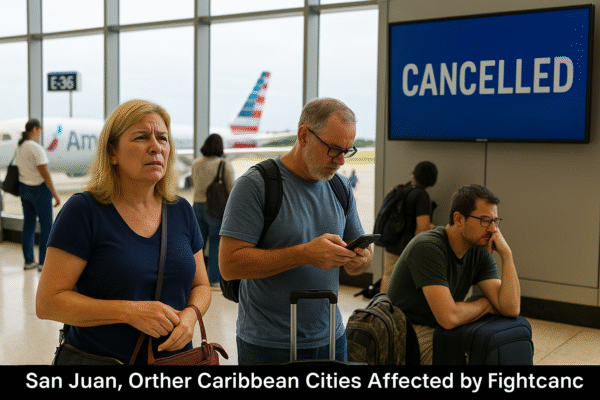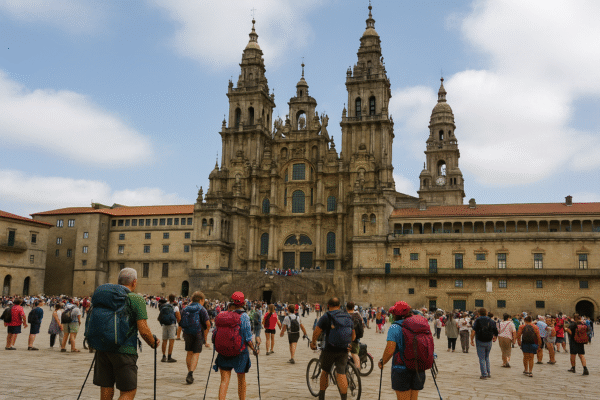Santiago de Compostela, the capital of Spain’s Galicia region, has long been one of Europe’s most cherished pilgrimage destinations. Famous as the endpoint of the Camino de Santiago (Way of St. James), the city attracts travelers seeking both spiritual renewal and cultural discovery. Yet in recent years, its popularity has soared to record levels, pushing the city into a mounting overtourism crisis.
What was once a relatively quiet hub for pilgrims has transformed into a bustling hotspot dominated by mass tourism. The old town, recognized as a UNESCO World Heritage site, now faces severe overcrowding, infrastructure strain, and a housing shortage that threatens the quality of life for residents. Locals, who once shared their traditions with pilgrims, now feel increasingly alienated in their own city.
Social Media and the Post-Pandemic Travel Boom
The explosion of Santiago’s popularity has been fueled by social media and the global desire for meaningful travel after the COVID-19 pandemic. Platforms like Instagram and TikTok amplify the city’s cobbled alleys, cathedral towers, and vibrant plazas, turning them into viral must-see spots.
However, the digital spotlight has shifted the visitor profile. Pilgrims still walk the Camino, but they now share space with thousands of tourists who arrive simply for the spectacle. Many of these visitors are drawn to photo opportunities rather than the spiritual or cultural depth of the city. This trend has sparked concerns among locals, who feel that the authentic character of Santiago de Compostela is being overshadowed by commercialized tourism.
Record-Breaking Pilgrimages
The Camino de Santiago has reached unprecedented numbers. In 2024, over half a million people completed the pilgrimage—a staggering figure considering the city itself has only about 100,000 residents. Compared to four decades ago, the growth is astronomical, with pilgrim numbers multiplying several hundredfold.
While this boom boosts local businesses and the hospitality sector, it also brings enormous challenges. Streets that once echoed with the quiet steps of pilgrims now overflow with tour groups, selfie sticks, and congestion. The transformation has blurred the line between a sacred pilgrimage and a mass tourism destination.
Courtesy Campaigns for Visitors
In response, local associations have attempted to restore balance. A neighborhood group has even published a multilingual guide of good manners for visitors. It urges tourists to respect traffic rules, keep noise to a minimum, and use protective covers on hiking poles to avoid damaging ancient cobblestones.
Despite these initiatives, adherence remains low. Reports of tour groups occupying entire squares, bikes zipping the wrong way, and the constant clatter of poles on stone streets highlight the tension between visitor behavior and the fragile urban fabric.
The Housing Crisis Deepens
Perhaps the most visible consequence of overtourism in Santiago de Compostela is its housing crisis. Between 2018 and 2023, rental prices soared by nearly 45%, driven largely by the growth of short-term rentals such as Airbnb. Many residents have been forced out of the historic center as apartments are converted into tourist lodgings.
City officials have moved to combat the trend, requesting designation as a “high-pressure housing zone.” This classification would allow tighter regulation of rents and stricter limits on tourist rentals. Already, new short-term rentals have been banned in the old town. Yet loopholes and unofficial channels mean many apartments continue to serve visitors instead of residents.
The result has been heartbreaking for locals, particularly young professionals. Many are leaving the neighborhoods where they grew up because they simply cannot afford to stay.
Cultural Shifts and the Loss of Community
Overtourism has not only affected housing but also reshaped Santiago’s cultural fabric. Traditional shops and local services are disappearing, replaced by souvenir stands, themed cafes, and tourist-centric restaurants. Residents lament that the old town feels less like a community and more like an open-air museum.
For pilgrims, too, the experience has changed. What was once a deeply reflective journey culminating in a serene city is now often marked by crowds, noise, and commercialization. Many pilgrims express disappointment that the spiritual essence of the Camino feels diminished.
Rising Local Frustration
Frustration is growing among residents who feel increasingly marginalized in the place they call home. Community leaders emphasize that they are not opposed to tourism itself but to its uncontrolled scale. The heart of the problem, they argue, is overtourism—a level of mass visitation that undermines the city’s livability and heritage.
Some locals describe the old town as being taken over, where tourists dominate public spaces while daily life for residents becomes more difficult. This resentment is fueling debates over how to manage Santiago’s future.
Seeking Sustainable Tourism Solutions
Santiago de Compostela’s challenges highlight the urgent need for sustainable tourism policies. While the city depends heavily on tourism for its economy, experts stress that growth must not come at the expense of cultural heritage or residents’ well-being.
Possible strategies include promoting off-season travel, enforcing stricter controls on short-term rentals, and investing in infrastructure that can handle large visitor flows without overwhelming the city. Equally important is fostering responsible tourism—encouraging visitors to engage with the city respectfully, beyond superficial consumption.
Conclusion: Balancing Heritage and Modern Tourism
Santiago de Compostela stands at a crossroads. Its global fame as the destination of the Camino de Santiago brings undeniable economic benefits, but also deep challenges that threaten its identity and livability.
The task now is to balance the influx of pilgrims and tourists with sustainable practices that protect the city’s soul. If managed carefully, Santiago can remain both a sacred pilgrimage site and a living city for its residents. But if left unchecked, overtourism risks eroding the very essence that has made it one of Spain’s most treasured destinations.
For more travel news like this, keep reading Global Travel Wire




